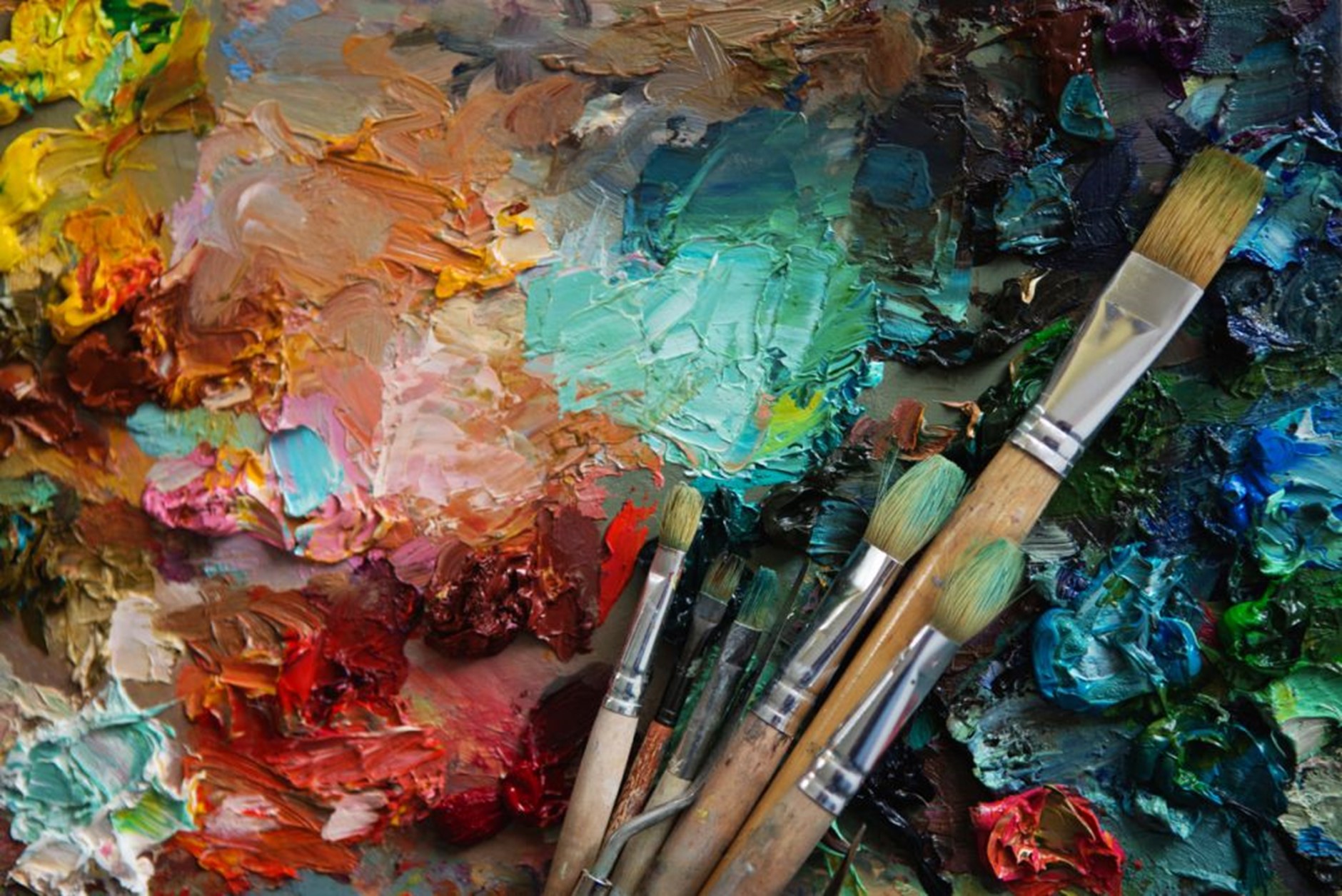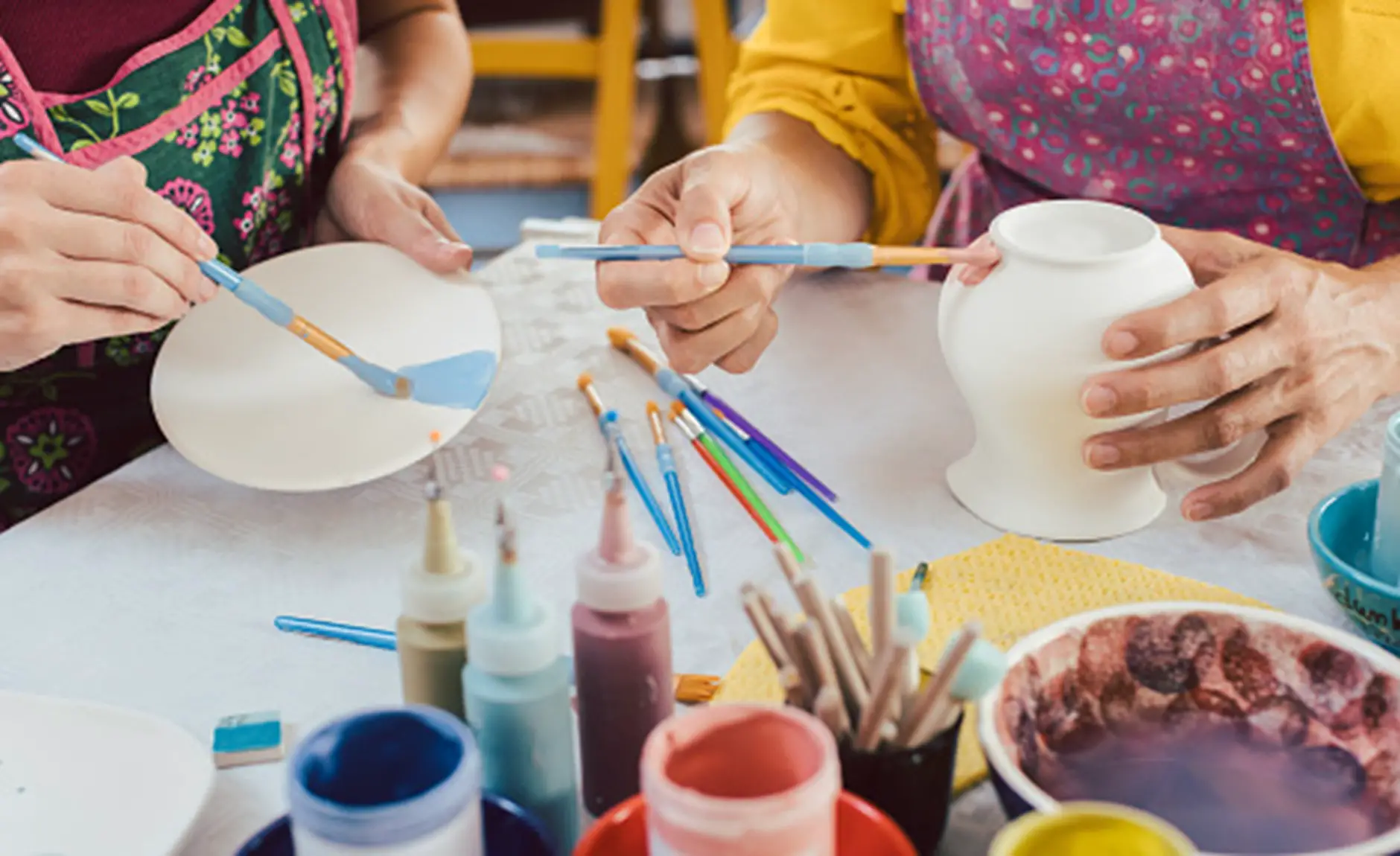If you are working with pottery, you may wish to paint a product you are making out of clay. Potters may and often do embellish ceramic works that are not intended for use with a wide range of conventional paints. Gouache and acrylic paints are two of the choices that are water-based and share some characteristics.
They have many things in common, yet they also differ significantly. Therefore, it is necessary to understand how they vary before choosing which one to purchase for your pottery project. If you have only recently started painting pottery and are undecided about whether to use acrylic or gouache as your first medium, we are here to help you.
Whether you like gouache or acrylic depends on your preferred pottery, the location for painting, and your preferred style and technique. In this article, we will help you decide which one is a better choice for your project. So, go ahead and learn it all!
Difference Between Gouache And Acrylic For Pottery
One medium where artists regularly employ conventional paints is ceramic work intended for display. Instead, they use gouache or acrylic paint mediums, which are very well-liked by professionals and amateurs due to their magnificent colors and finishes. However, they dry with a different color shift and a unique surface finish. So, what’s the distinction between acrylic and gouache? Here, take a look below!
Features |
Gouache |
Acrylic |
Binding Quality |
Gouache includes Arabic gum.Gouache becomes water-soluble when they dry. |
Acrylic paints contain an acrylic polymer.The acrylic polymer dissolves in water when wet. However, when it’s dry, it changes into water-resistant plastic. |
Finish |
Gouache, in contrast, dries to a smooth, flat, matte surface that could look duller. |
Acrylic paint dries with a glossy, opaque, and bright appearance.
|
Texture |
Gouache paint can crack if it is put in extremely thick layers. You can try some gouache expressly developed for multilayer applications to minimize cracking. |
You may apply acrylic paint in thicker layers for texture. Thick acrylics may provide textures resembling those in oil paintings.
|
Drying Time |
Gouache paints are easier to blend and dry much more slowly than acrylic paints. Even after it has dried, you may revive the gouache with water, making blending simple even if it dries rapidly. |
Since acrylics dry too quickly, they offer less time to work with and blend the paint independently. However, there are various techniques you can do to postpone the drying process. |
Longevity |
Gouache is not water-resistant and does not tolerate dust or light well. |
Since acrylic dries quickly to the consistency of plastic, it is more resilient than gouache. It also relies on the paint’s quality and how well it is stored.Additionally, acrylic paint is better at withstanding light and aids with dust repulsion. After curing, the paint becomes water-resistant but not waterproof. The color may crack or peel if exposed to excessive moisture or water. It is necessary to waterproof items that have been painted with acrylic if you intend to keep them outside. |
Which One To Consider For Pottery: Acrylic Or Gouache
Which is the better choice for you, gouache or acrylic, then? You might be wondering what kind of paint works best on clay. Ceramics has a broad range since any form or shape may be produced. However, to create your masterpiece, you must exercise caution and adhere to specific guidelines.
Although working with ceramics is very straightforward, there are a few things to keep in mind if you want to add color to your product to give it life. First, it is advised to bake your clay and let it cool thoroughly before attempting to paint it.

Acrylic For Pottery
You may add bold and brilliant colors with acrylic paints specifically created for ceramics. Additionally, you may try incorporating some of your imaginative thoughts into your ceramic artwork. All you need for cleanup after using acrylic paints is some water. Since most acrylic paints used to decorate ceramics are non-toxic, you may use them indoors. They are handy, easy to use, and family-friendly as well.
Finding the correct color for your project is relatively simple because of the wide selection of colors that acrylic paint manufacturers provide. The best paint for ceramics is the acrylic paint that has been created explicitly for ceramics painting. These paints are readily accessible at hardware and arts and crafts stores. If you intend to make pottery for food and hot beverages, ensure that the acrylic is water-based and non-toxic, like the INK LAB Acrylic Paint Set.
Gouache For Pottery
On the other hand, gouache is relatively thin. The binder of gouache maintains the pigment floating in the water and makes it possible for it to stick to the surface after application. It is pretty simple to use when painting on clay, but as it has a thin texture, you can have some running if the surface isn’t perfectly smooth. You might also need to cover the clay in several coats due to its thin nature. Finally, applying a primer to the clay’s surface will help you achieve the most significant effects from the gouache.
A primer made of acrylic gesso is one of the finest choices. It will make the clay more absorbent and make it easier for the paint to adhere to the surface. Additionally, it will stop future peeling and cracking of your pottery piece. You must also dry the clay before applying any paint. Since gouache is a water-based paint, the clay will keep absorbing the water from the paint as it dries. Therefore, it may cause the color and the clay to crack later.
Wrapping Up
Potters may often use various additional conventional paints like acrylic and gouache. Both are well-liked and have distinctive features that make each a particular artist’s favorite. You could be wondering if acrylic paint or gouache paint is superior.
Considering all the factors we discussed, acrylic provides a better texture and finish. However, it is easier to work with gouache since it dries slowly and gives you a chance to blend and rework at any given moment.







